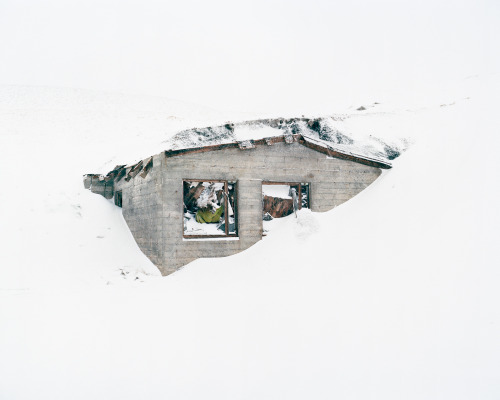
© Peter Holliday from the series ‘Where the Land Rises’
Tell us about your approach to photography. How it all started? What are your memories of your first shots? And how did your research evolve with respect to those early days?
Peter Holliday (PH): Like a lot of kids I initially wanted to be an archaeologist or a historian. I grew up in a rural community close to the earthwork remains of a Roman fort built around 2000 years ago by Agricola’s army during their campaign of Scotland. A past landscape of conquest, I was intrigued about this remote outpost built on the territorial fringes of an ancient empire. I had not yet picked up a camera but what interested me were the marks this ancient culture had made on the land still clearly visible despite the passing of two millennia. In consideration of my own creative practice today, I feel my photography is inspired by the same sense of anthropological curiosity about the landscape; an investigation of nature and our place in it.
I think I was about 10 when I was given my first camera by my parents, a disposable Kodak. When I was about 15 I was given a roll of 35mm b/w film and a Minolta SLR to shoot by my father and with his help we developed it together in the kitchen.
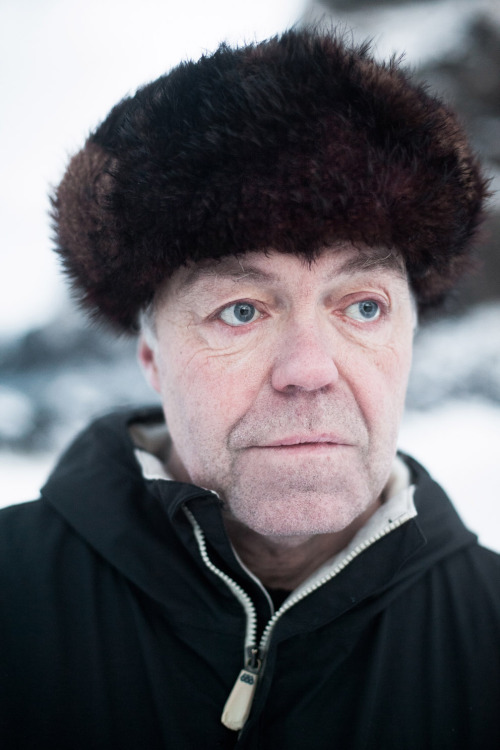
© Peter Holliday from the series ‘Where the Land Rises’
Tell us about your educational path at Glasgow School of Art. What are your best memories of your studies? What was your relationship with photography at that time?
PH: I studied a 4-year degree in Communication Design at art school. After the first couple of years I ended up specialising in photography under a lecturer called Andy Stark. Within the environment of art school we were continually encouraged to question the meaning and role of the photograph to help develop our themes and ideas. I certainly found that process beneficial in my own practice. Art school was also chance to see what other people were creating on a daily basis, as well as a great opportunity to use facilities that I otherwise wouldn’t have gained access to.
What do you think about photography in the era of digital and social networking?
PH: I think as photography becomes increasingly digitised we’re going to see a resurgence in traditional analogue techniques where the photograph is redeemed as an object and the process is emphasised as a craft once again. Meanwhile we will continue to see artists challenge the traditional interpretation of the photograph. Take Michael Wolf for example, whose series ‘Street View’ is compiled from scenes found on Google’s Street View.
I’ve heard people say photography is in crisis, but it always has been. It is a medium that is revisionist by nature. Ever since their inception the camera and the photograph have not only been used to record the coming of modernity but have both remained powerful symbols of technological advancement. I think today’s age of the smartphone and the ‘Instagram-amatuer’ only encourages the artist to question both the role of the photographer and the definition of the photograph within a medium that is less than 200 years old, and this discussion can only be positive for this rapidly evolving art form.

© Peter Holliday from the series ‘Where the Land Rises’
Your dissertation ‘From Proletariat to Precariat: Representations of Labour in the Age of Globalisation’ explores how still photography and the moving image have been used to critically represent the condition of labour within the context of neoliberal globalisation. What are your conclusions?
By comparing the work of artists such as Sebastião Salgado, Alan Sekula, and Steve McQueen, I wanted to look at how still photography and the moving image have been used to expose conditions of labour in an era that has witnessed the significant decline of the classical Marxist conception of the proletariat and the subsequent emergence of the precariat across many post-industrial western democracies.
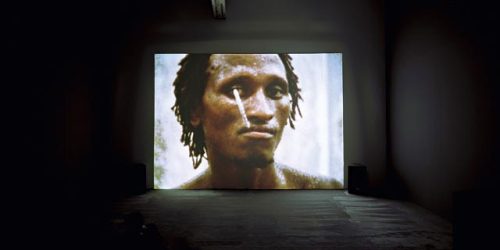
© Steve McQueen ‘Western Deep’ at Schaulager, Base
The images of Salgado, Sekula, and McQueen question the framework that the global forces of order use to justify their ideology of neoliberalism. But they also highlight a challenge. Marxism has been in crisis ever since its first serious political application in 1917. Here is a 19th century philosophy that promised the emancipation of the masses from the slavish labour conditions of capitalist society yet would later galvanise some of the most restrictive regimes the world has known. Meanwhile the proletariat, the class entitled with the task of abolishing capitalism, is almost non-existent in the West today.
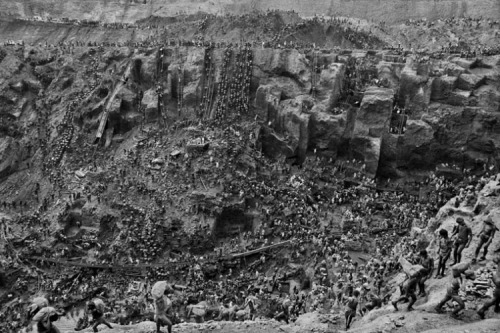
© Sebastião Salgado, Serra Pelada, State of Pará, Brazil, 1986
Of course, any prevailing ideology that puts profit over people must be scrutinised too. We live in a post-Marxist age, as illustrated by Alan Sekula whose work ‘Fish Story’ reveals the ‘invisible’ maritime economy as a metaphor for the condition of the precariat and contemporary labour under neoliberalism. However, Salgado’s ‘Workers: An Archaeology of the Industrial Age’ and McQueen’s short film ‘Western Deep’ remind us of the alienating drudgery of labour under globalisation and the continuing existence of the proletariat within many developing economies.

© Alan Sekula
If we are to address the problems evidenced by these artists, we must find a new politics based on socialist ideas that is able to transcend the bureaucratic orthodoxies of its Marxist predecessor. Within many western democracies, I believe there is a growing consensus towards this type of progressive change.
About your work now. How would you describe your personal research in general?
PH: Much of my current research explores the austere coastal and mountainous landscapes of ‘the North’ and of the people who endure such environments. I’m drawn to the history of northwest Europe and the polar regions, and by the mythologies inspired by these remote topographies for centuries.
I want to highlight the human relationship with the landscapes that mankind finds itself in. My aim in my work is to reflect on themes of time, memory, and home within the context of the cultural, historical, political, and emotional significance of the topographies that underpin humanity’s existence. I want to reveal nature as something material that exists in relation to human subjectivity, expressing landscape as both an entity influenced by human action as well as something that was always-already there, characterised by ongoing objective forces that do not cease to exist beyond human consciousness.
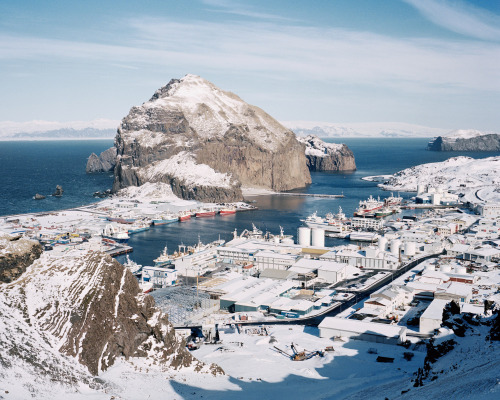
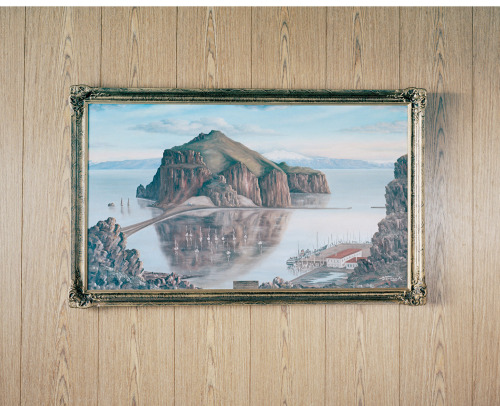
© Peter Holliday from the series ‘Where the Land Rises’
Do you have any preferences in terms of cameras and format?
PH: I enjoy the process of negative film. I’ve so far worked mostly with medium format. There’s definitely a lot more consideration involved with film and I think that’s really important especially when it comes to approaching landscape.
Tell us about your project 'Where the Land Rises’.
PH: ‘Where the Land Rises’ is a series documenting the people and landscape of Heimaey, the largest island of the Vestmannaeyjar archipelago in southern Iceland. The project is a retrospective on the eruption of Eldfell which began on 23rd January 1973 and lasted until June of the same year. The event led to the immediate evacuation of the island, destroying many homes and violently altering the geography of Heimaey. As the lava flow moved towards the harbour threatening to destroy the island’s economic lifeline, interventions were made to divert the drifting lava, and a dam of solidified basalt was successfully created by spraying the flow with billions of litres of seawater. The harbour had been saved but the island’s landscape had been changed forever.
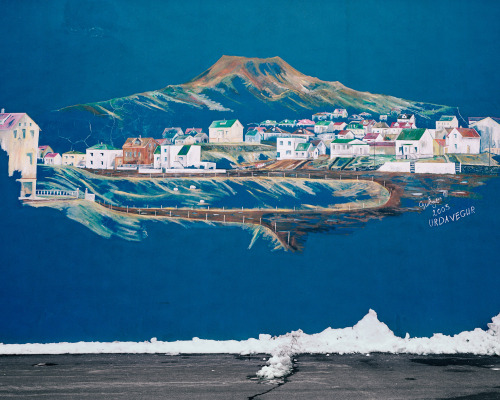
© Peter Holliday from the series ‘Where the Land Rises’
Within the temporal scale of our existence, significant geological change often happens too slowly for humans to experience. Although commonplace in Iceland, volcanic eruptions are unique and notable events. After my initial investigations of the eruption of Eldfell, I thought about how it must feel to witness the geography of your homeland change so dramatically within several months and what this sudden trauma to the symbolic order of existence reveals about humanity’s relationship with the landscapes we dwell in. Now 42 years on, my project aims to not only reflect on what was lost during the eruption but also to document what has been regained since by the island’s inhabitants.
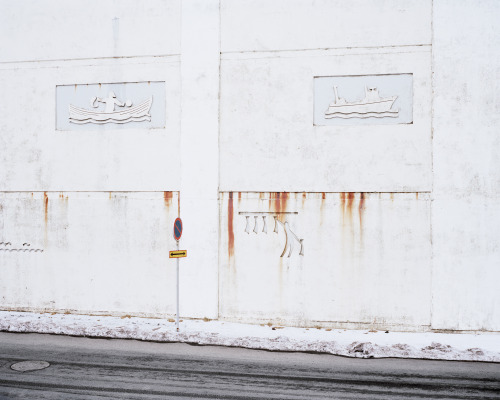
© Peter Holliday from the series ‘Where the Land Rises’
Is there any contemporary artist or photographer, even if young and emerging, that influenced you in some way?
PH: There are a few. I recently watched Andrey Zvyagintsev’s latest film ‘Leviathan’ (2014), a tragic drama about government corruption that explores mankind’s ties to the land against the desolate backdrop of a Russian coastal town on the northern extremes of civilisation. That film certainly resonated with me a lot; I feel like I’m aiming to express similar sentiments about landscape in my own work. The cinematography by Mikhail Krichman is stunning too.
My favourite photographers are those that focus on the human-landscape relationship such as Bryan Schutmaat, Sébastien Tixier, Dana Lixenberg, Nadav Kander, Danila Tkachenko, and Edward Burtynsky. I also enjoy the films of Werner Herzog, Paul Thomas Anderson, and Terrence Malick.
Three books of photography that you recommend?
PH: My favourite photobook has to be ‘American Prospects’ by Joel Sternfeld. I also really admire ‘The Place of No Roads’ by Ville Lenkerri, and ‘The Last Days of Shishmaref’ by Dana Lixenberg.
Is there any show you’ve seen recently that you find inspiring?
PH: I recently saw Joakim Eskildsen’s exhibition A world I can believe in at the National Museum of Photography in Copenhagen, Denmark. The show was an extensive retrospective of Eskildsen’s work presented in a positively unconventional way - instead of being framed, much of the work was mounted or pinned to the wall. Also on display were the artist’s contact sheets, several book dummies, and multiple sketchbooks, allowing the viewer to engage in Eskilden’s process as a photographer.
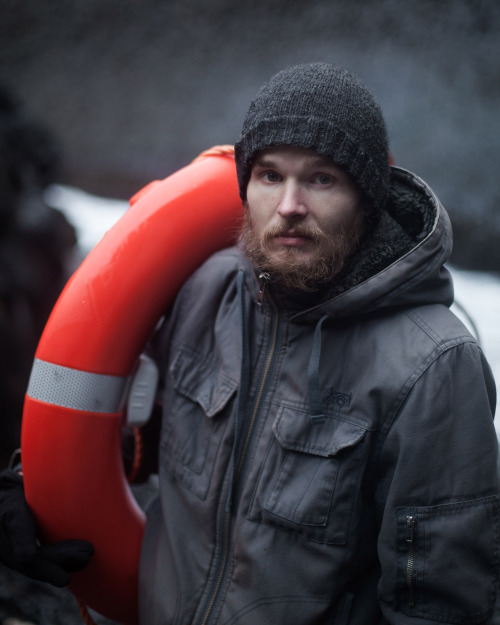
© Peter Holliday from the series ‘Where the Land Rises’
Tell us more about projects that you are working on now and plans for the future?
PH: I’m currently preparing to show some images from my project ‘Where the Land Rises’ at an upcoming solo exhibition at the Reykjavík Museum of Photography that opens in early December and runs until late January 2016. With regard to my future practise I aim to continue exploring landscapes of the North and I’m keen to develop a project about the Shetland Isles. I’ve always been fascinated by Scandinavia and northwest Europe and I’d like to understand more about how my home country of Scotland fits into this broad region both culturally and historically at a time when questions of Scottish identity are continually being asked.
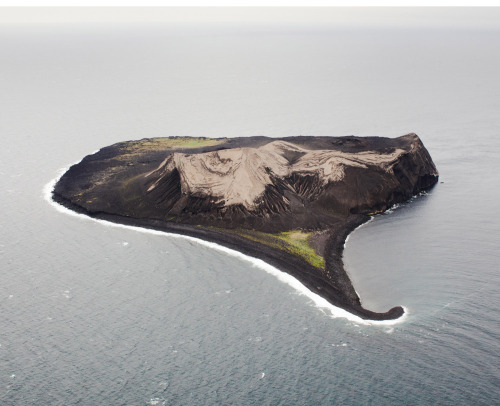
© Peter Holliday from the series ‘Where the Land Rises’
You have recently joined the Urbanautica team to help us deepen the UK photo scene? What are your impressions? Any British photographer that you are particularly fond of?
PH: There are countless talented photographers within the UK scene and I’m looking forward to discovering more of them as a contributor to Urbanautica. I really admire the work of Jon Tonks’ and his series Empire which documents the few remaining British Overseas Territories around the world today. I also recommend the work of my friend, Alan Knox, and his project ‘Universal Sympathy’ which is a fascinating series of photograms made using his grandfather’s ashes exploring the cosmic connection between life and death.
---
LINKS
Peter Holliday
United Kingdom
share this page